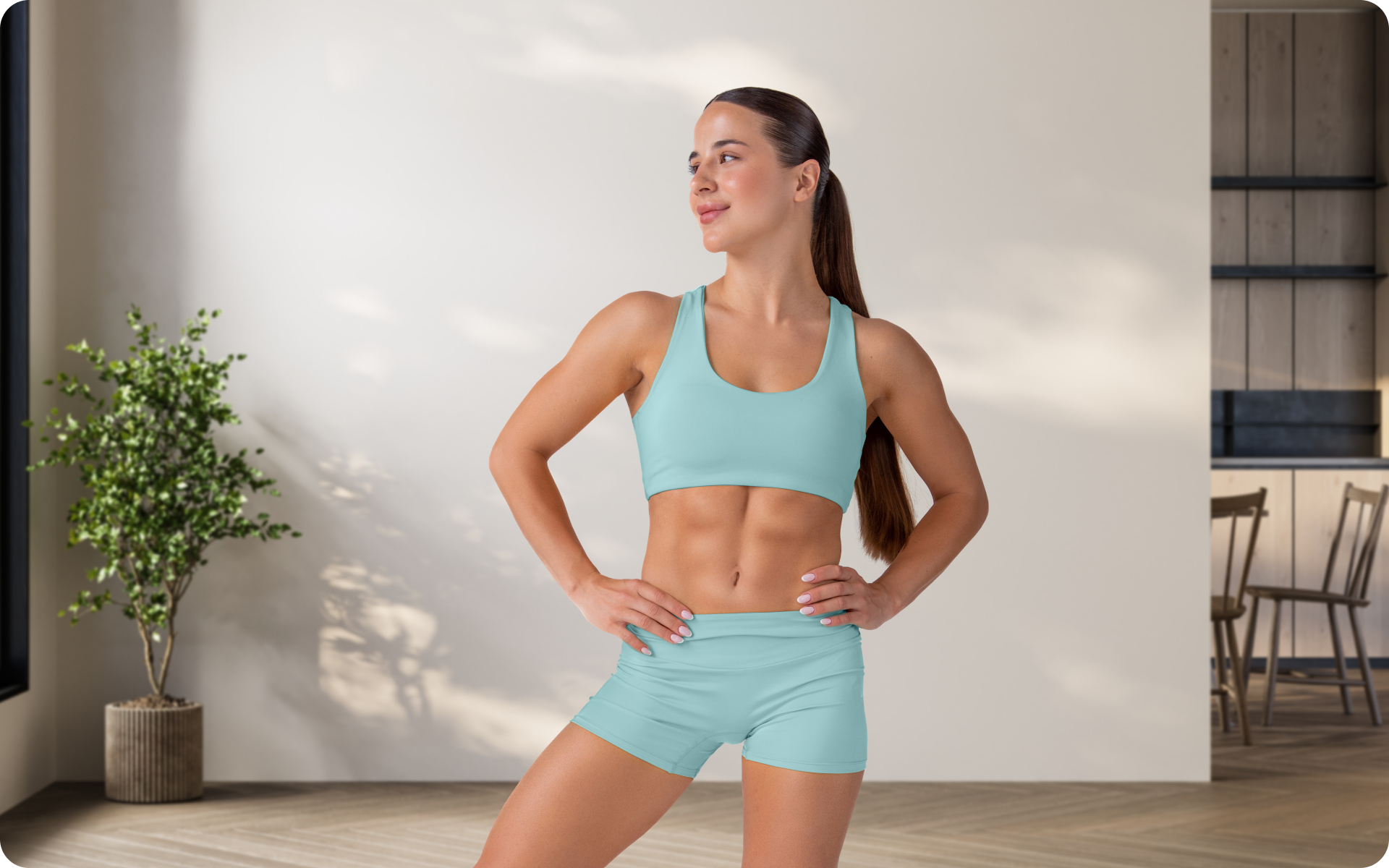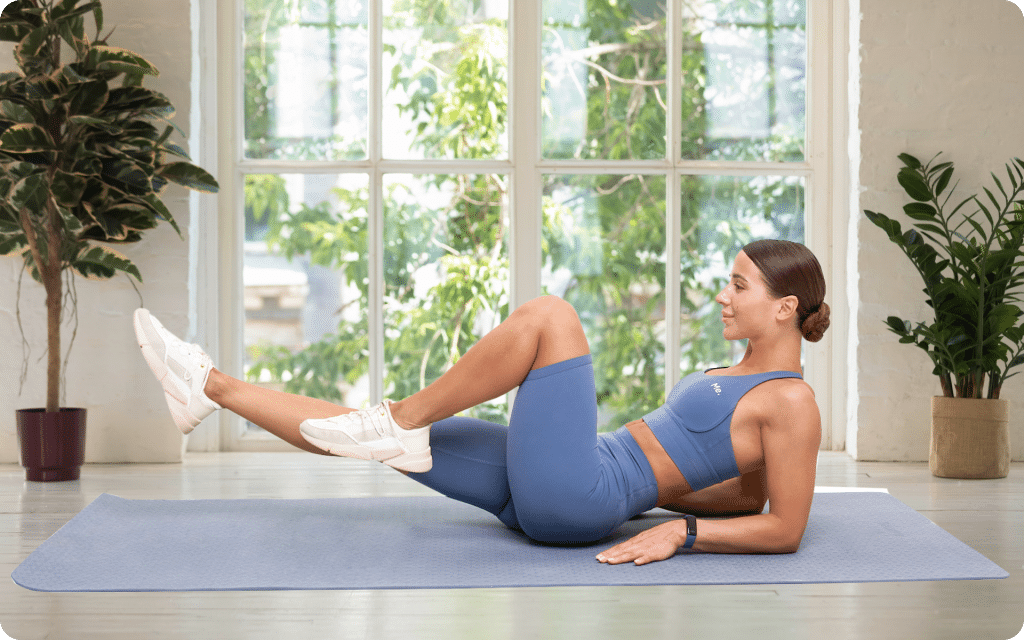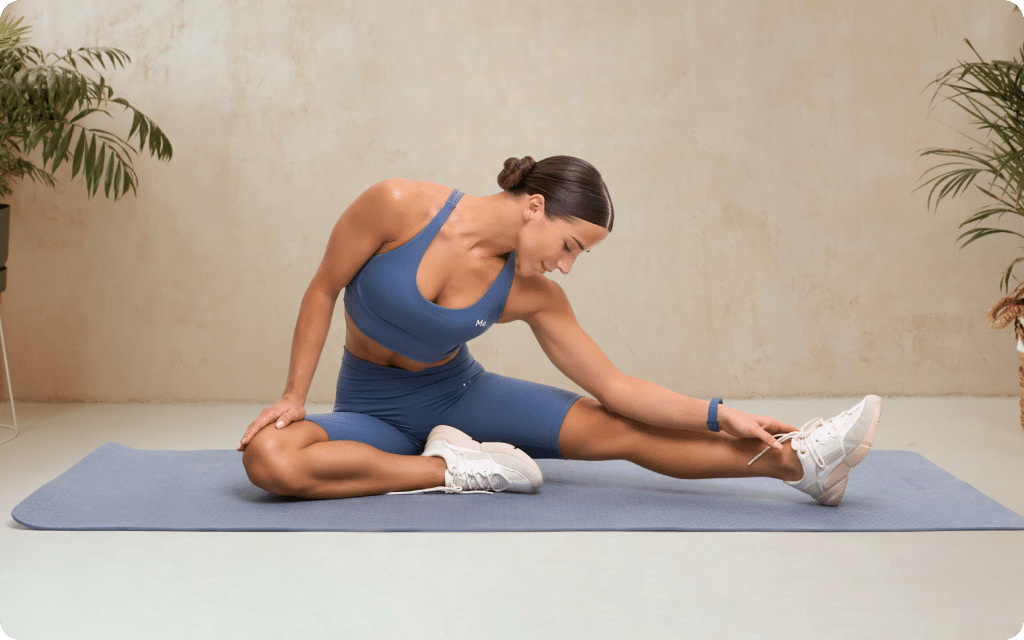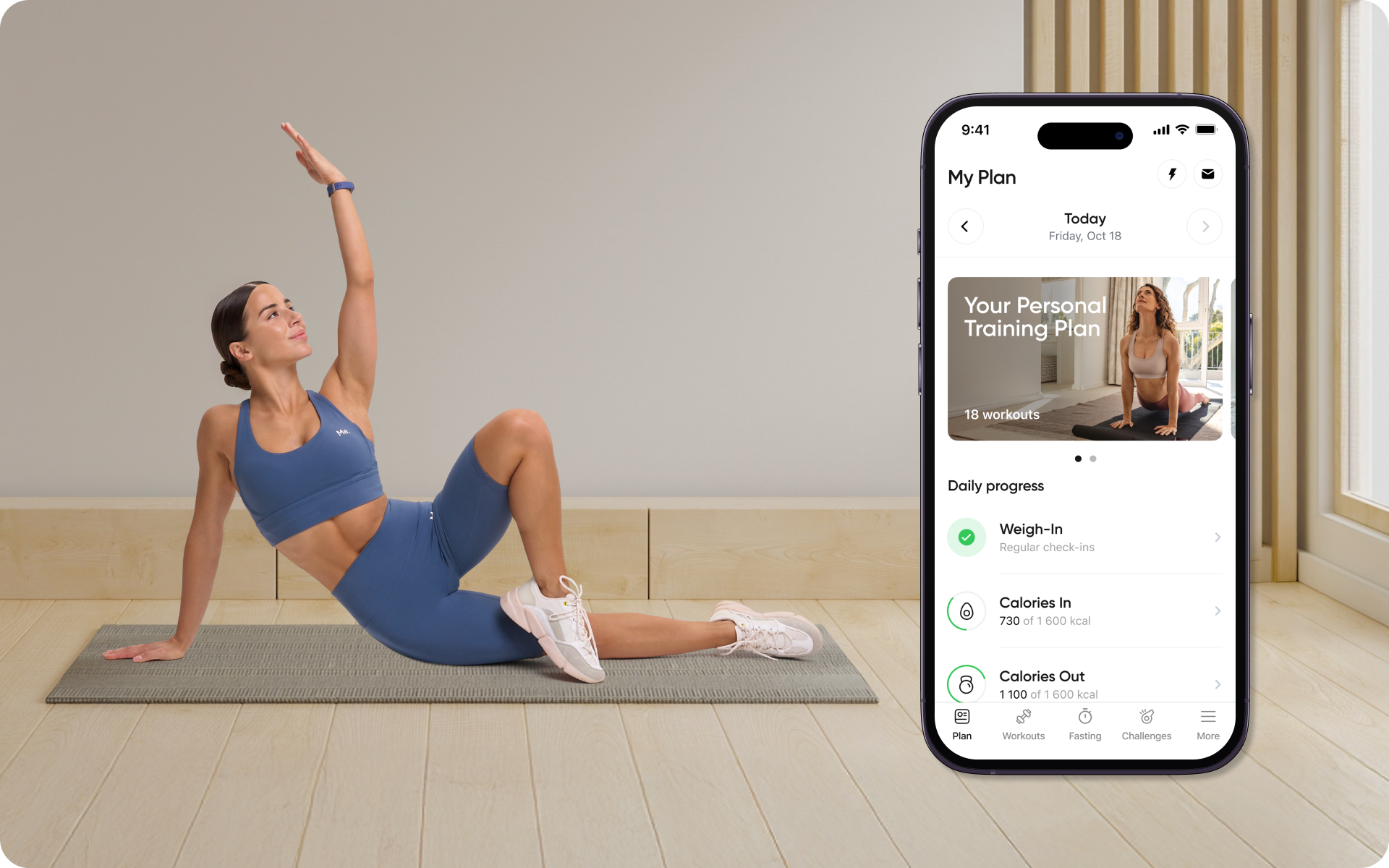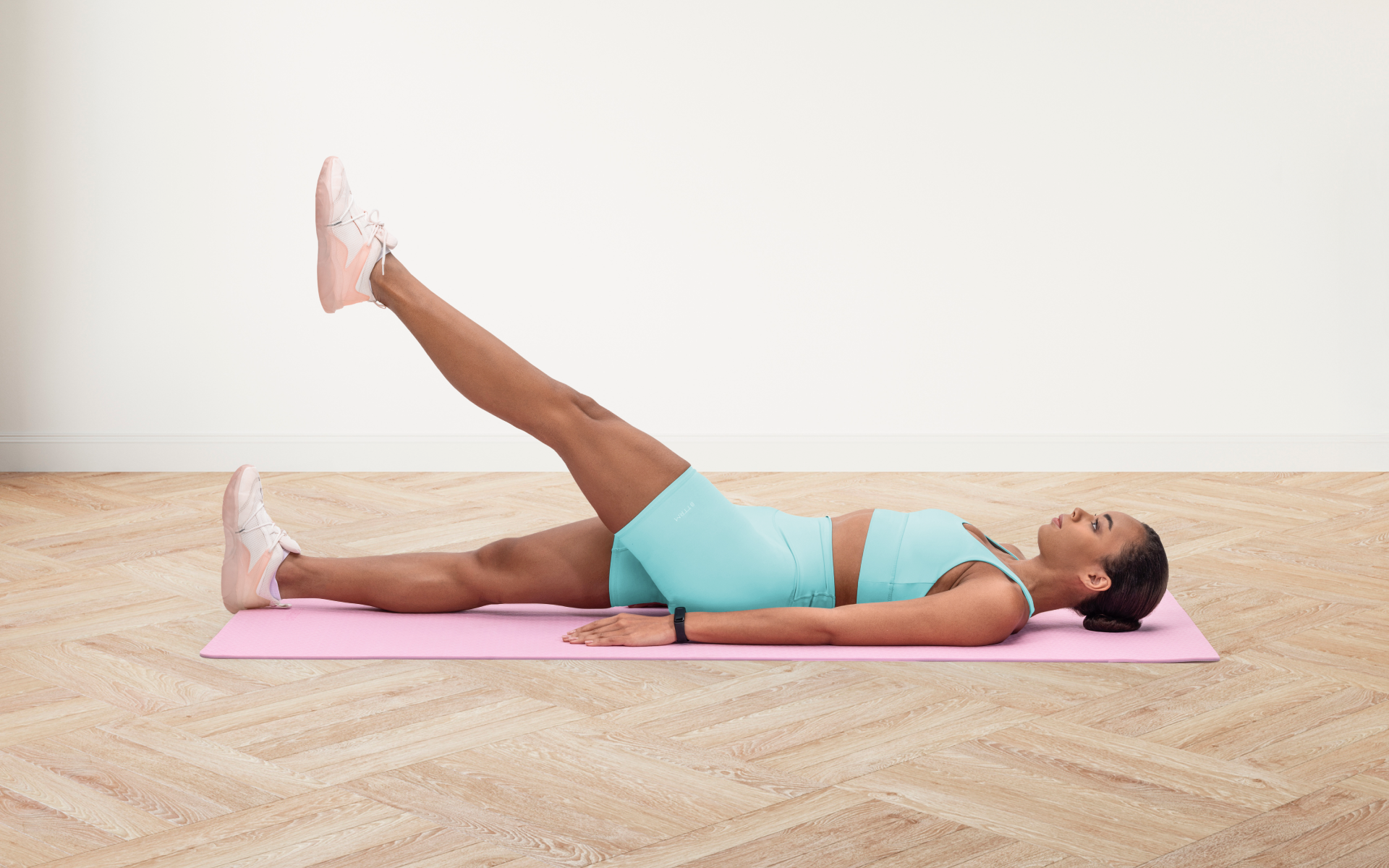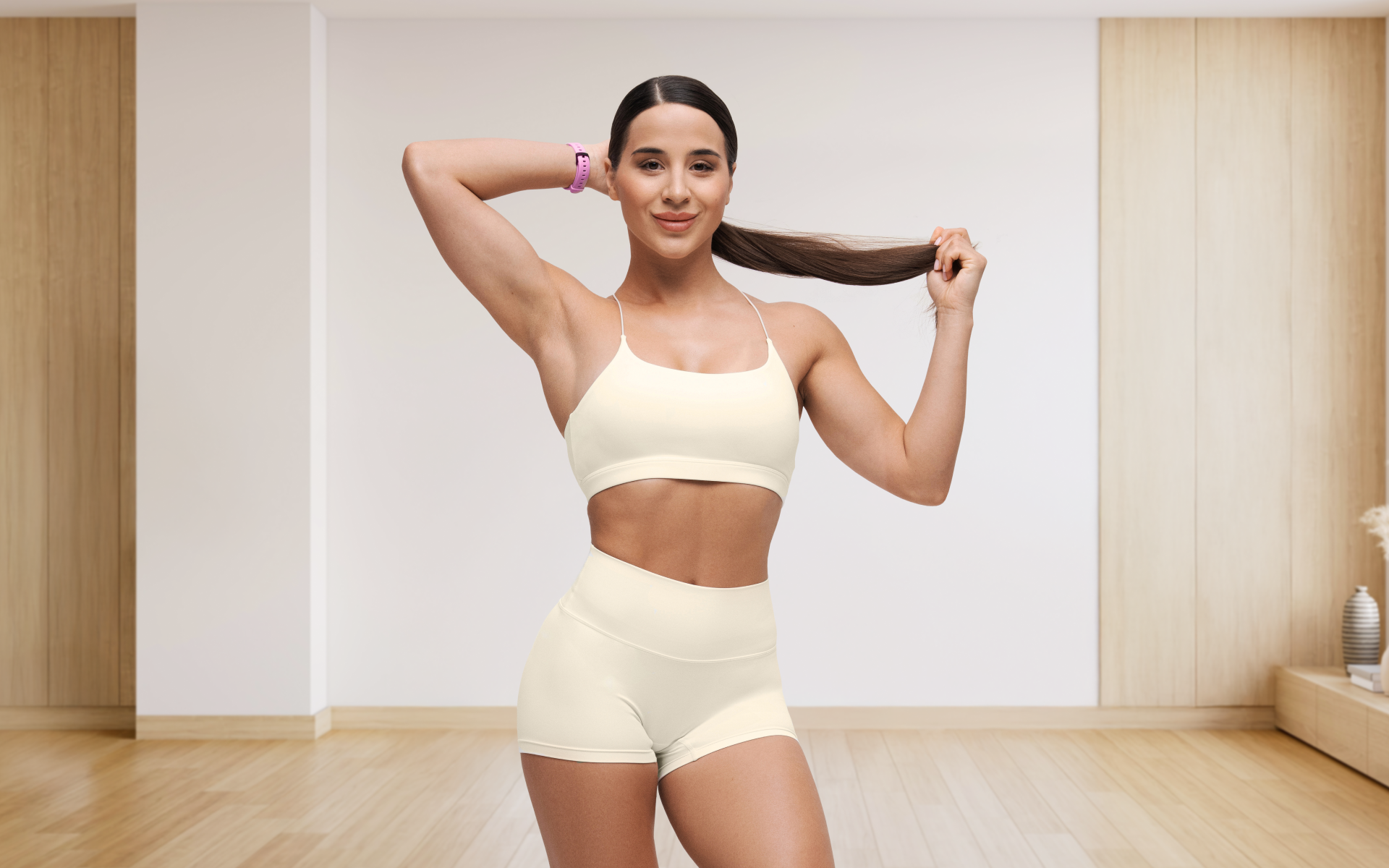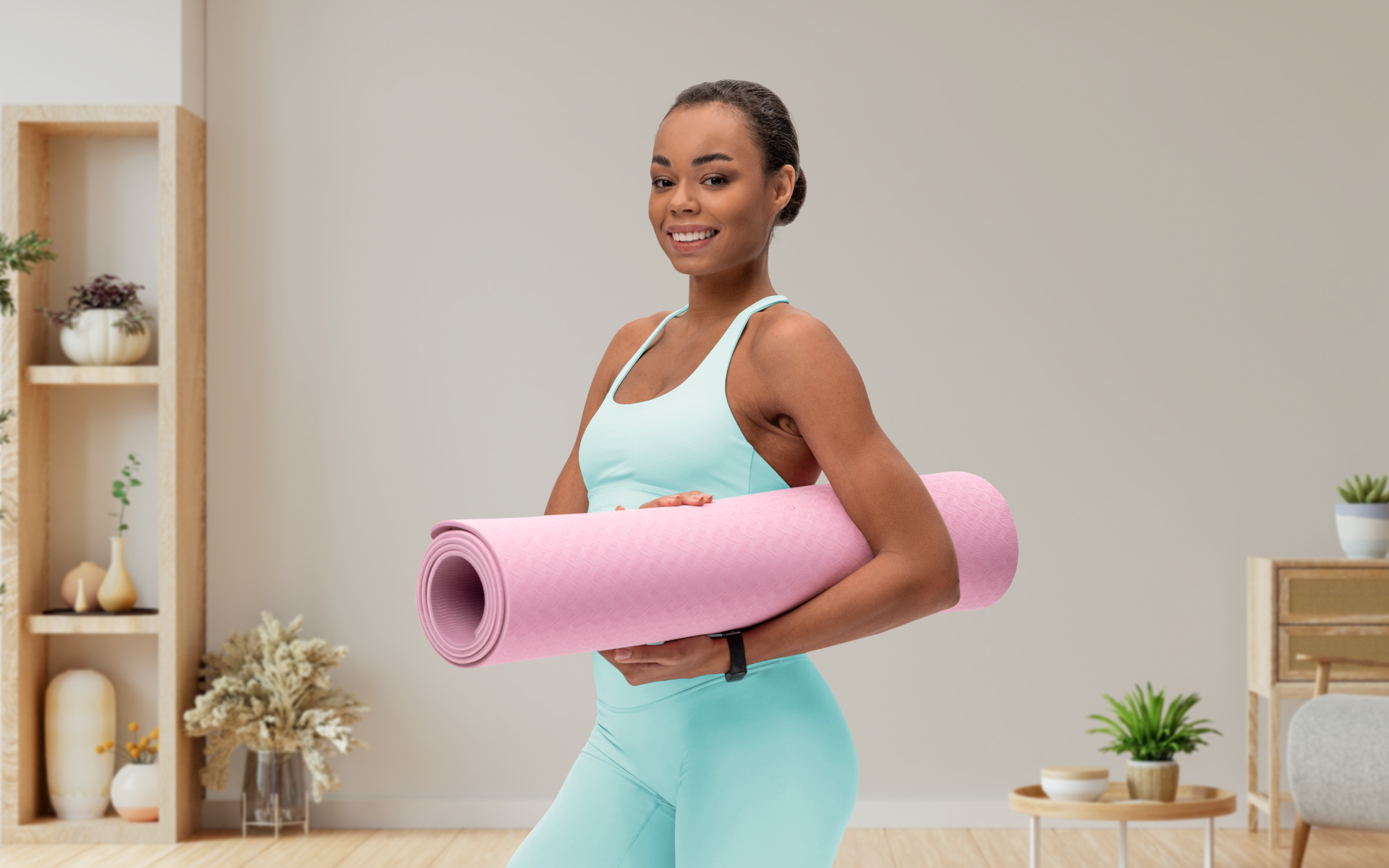Tracking your Pilates progress is one of the most helpful and motivating ways to stay consistent on your fitness journey. Whether you are a beginner at Pilates or you have been at it for a while, seeing and understanding how far you’ve come keeps you aligned with your Pilates goals and inspires you to do more.
But how do you track your Pilates progress? What do you need to look out for to see that you are advancing steadily? Read on for more!
What Is Pilates Progress And How Does It Show Up?
Pilates progress is the moderate improvement in physical, mental, and even emotional well-being that comes from practicing Pilates.
What Does Pilates Progress Look Like?
Pilates progress can show up in any of the following ways:
- Increased Muscle Strength
Whether you are looking for mat or reformer Pilates progress, one of the most obvious signs that your routine is working is increased muscle strength.
Improvements in muscle strength are one of the known benefits of this training program:
- In a 2015 study, researchers found that postmenopausal women who practiced mat pilates for 12 weeks showed significant improvements in upper-body, lower-body, and abdominal muscle strength (1).
- In a more recent study, researchers found that practicing reformer Pilates 3 times per week for 8 weeks improved muscular strength and endurance in overweight and obese women (2).
These results show that, regardless of the types of Pilates you choose to practice, increases in muscular strength are one of the benefits that you can achieve.
Gaining muscle is an excellent way to track your Pilates progress as well.
In day-to-day life, increased muscle strength can show up in how easily you can carry groceries, climb the stairs, or lift heavy objects.
Reasons why BetterMe is a safe bet: a wide range of calorie-blasting workouts, finger-licking recipes, 24/7 support, challenges that’ll keep you on your best game, and that just scratches the surface! Start using our app and watch the magic happen.
- Improved Flexibility
Flexibility describes the ability to move your joints through their full range of motion, which allows your muscles to extend, stretch, and contract without resistance.
Age is one of the factors that significantly affect flexibility, and research shows that the loss of flexibility accelerates once we hit our 40s and 50s (3). This increased muscle tension makes daily activities such as bending, reaching, and even maintaining balance, difficult (4).
Thankfully, studies show that Pilates can help you maintain or even improve your flexibility:
- In an older study published in the Journal of Strength and Conditioning Research, the experts found that test subjects who practiced low-intensity mat pilates exercises twice a week for 1 hour improved not only their muscular endurance but also their flexibility (5).
- In another study published in the Asian Journal of Sports Medicine, researchers found that attending 45-minute training sessions 2 times per week for 8 weeks helped participants improve the flexibility of their lower back and legs and enhance lumbo-pelvic stability (6).
- In a more recent study, researchers found that, compared to a control group, participants who trained with Pilates for 8 weeks, 3 days per week, 60 minutes per session, experienced improved flexibility and upper- and lower-body strength (7).
Thus, periodically testing your flexibility can help you see whether you are making progress with a Pilates training program.
Check out this beginner-friendly Pilates workout full-body routine.
- Pilates Basics Exercises Feel Easy
Anything new, such as an exercise routine, a job, or a new class, can feel hard at first.
However, with dedication and consistency, what previously felt impossible gradually gets easier to the point where you start looking for new challenges.
This adaptation also applies to Pilates. Your first few classes will have you feeling like a fish out of water, and you will likely feel winded and exhausted by the end of each session. However, over time, your body will adjust, and you may find yourself looking up Pilates progress exercises to challenge yourself with more intermediate or advanced moves.
The desire for more challenge is a clear sign that you are making progress with your Pilates fitness. If you’re curious about Pilates basics, check out our earlier article.
- Improved Mental Health/Well-Being
Studies over the years have shown that Pilates might help reduce stress levels and stress-risk behaviors like substance abuse, poor eating habits, etc., depression and anxiety symptoms, feelings of fatigue, and can also improve energy levels; however, more research is needed (8, 9, 10).
Improvements in any of the factors above can be a good way to measure Pilates progress in relation to mental health and well-being.
Read more: How Often Should You Do Pilates to See Results?
How Fast Can I See Results With Pilates?
It is hard to say. Because exercise progress results stem from unique factors such as:
- Training variables: Your frequency, intensity, and the time you spend exercising will affect how fast you will see results. This is why consistency and progressive overload are highly advisable in any workout routine.
- Individual factors: Your current health status, age, genetics, and gender all affect how quickly you see results from a workout routine.
For example:
- Men often see faster results than women since their bodies naturally have more muscle than most women.
- Younger people often see results quickly than older people.
- In terms of weight loss, heavier people usually see initial, drastic results compared to lighter people, as it takes more energy (burns more calories) to move a larger body than a smaller one.
- Lifestyle factors: Your nutrition, number of rest days, stress levels, and how much sleep you get per night all affect how quickly you see positive results from your workout routine.
As you see, all these factors make it impossible for us to give you an accurate estimate of what to expect for your 1-month Pilates transformation.
For the best Pilates results, we suggest:
- Exercising 3-5 days a week for at least 30 minutes per session
- Watching your diet. I.e., increase your protein intake, watch your calorie intake: a calorie deficit works best for weight and fat loss, a caloric surplus is best for increased muscle growth, and maintaining your current intake works best for anyone not looking to lose or gain weight or increase muscle mass.
- Sleep 7-9 hours each night
- Reduce stress levels: As seen above, Pilates can be a stress-reliever, but other practices like yoga and meditation can help as well.
BetterMe will shake off your mental funk, rid you of your energy-zapping habits, and help you sculpt the body of your dreams. Intrigued? Hurry up and change your life for the better!
How Often Should I Go To Pilates To See Results?
According to the CDC, adults need at least 150 minutes of moderate-intensity physical activity each week for good health. This recommendation translates to 30 minutes of exercise a day, 5 days a week, and it’s the minimum requirement (11).
Beginners new to Pilates can start going 2-3 times a week, 30 minutes a session, as they work up to 5 days a week.
Since intensity and duration also matter for exercise progress and results, gradually increase the difficulty of your Pilates exercises and extend the duration from 30 minutes to 45 minutes, or even an hour.
Read more: What Does a Female Pilates Body Look Like?
Can Pilates Change Your Body In 3 Weeks?
Yes, it can. While you may not see physical changes (the consensus is that it takes 6-8 weeks to see these initial changes), you may notice physiological changes, such as improved sleep and stress levels, better cardiovascular health, and a better mood.
How To Maximize Pilates Results Sustainably
To maximize your Pilates results for the long term, you should:
- Prioritize consistency: Exercise 3-5 times per week.
- Eat well: This means reducing junk food as well as added sugars and salts.
Consume whole foods within your recommended calorie intake and stay hydrated.
- Work on improving your form and breathing, as they are essential to Pilates success.
- Adequate sleep: Uninterrupted 7-9 hours of sleep per night
- Prioritize rest and recovery: At least 48 hours of uninterrupted rest per week will help prevent overtraining, and increasing your protein intake will help with improved muscle growth and strength.
Contrary to popular opinions online, there is no standard Pilates body. Due to the individual factors mentioned in the results section above, we cannot all have the same body from practicing Pilates. However, the exercise routine can help increase muscle mass and strength, as well as improve body composition. Neither workout is better than the other; individual preferences and goals are what make people choose one over the other. We suggest trying both and seeing which option you like best. Yes, you do, as failure to do so can lead to overtraining. Two rest days per week are good for preventing this. It depends on your overall goal. If your goal is strength and muscle building, you should start with Pilates. Cardio before Pilates may tire you out, preventing you from giving your all during Pilates. However, if the goal is improved performance and cardiovascular endurance, then cardio before Pilates is the better choice. Overall, it is also a great idea to switch which form of exercise you do first, as it will challenge you in different ways. Frequently Asked Questions
What does a Pilates body look like?
Is Pilates better than yoga?
Do you need rest days from Pilates?
Should I do Pilates or cardio first?
The Bottom Line
We can measure Pilates progress in various ways through improved muscular strength, balance, flexibility, and more.
There is no one best way to do it. Be sure to also maximize your long-term results by being consistent with your workout routine, eating a well-balanced diet within your recommended calorie intake, hydrating, and reducing your stress levels.
DISCLAIMER:
This article is intended for general informational purposes only and does not serve to address individual circumstances. It is not a substitute for professional advice or help and should not be relied on for making any kind of decision-making. Any action taken as a direct or indirect result of the information in this article is entirely at your own risk and is your sole responsibility.
BetterMe, its content staff, and its medical advisors accept no responsibility for inaccuracies, errors, misstatements, inconsistencies, or omissions and specifically disclaim any liability, loss or risk, personal, professional or otherwise, which may be incurred as a consequence, directly or indirectly, of the use and/or application of any content.
You should always seek the advice of your physician or other qualified health provider with any questions you may have regarding a medical condition or your specific situation. Never disregard professional medical advice or delay seeking it because of BetterMe content. If you suspect or think you may have a medical emergency, call your doctor.
SOURCES:
- Effects of a Pilates exercise program on muscle strength, postural control, and body composition: results from a pilot study in a group of post-menopausal women (2015, pmc.ncbi.nlm.nih.gov)
- Effects of reformer pilates on body composition, strength, and psychosomatic factors in overweight and obese women A randomized controlled trial (2025, nature.com)
- Age-related mobility loss is joint-specific: an analysis from 6,000 Flexitest results (2013, pmc.ncbi.nlm.nih.gov)
- Are flexibility and muscle-strengthening activities associated with functional limitation (2022, pmc.ncbi.nlm.nih.gov)
- Pilates for Improvement of Muscle Endurance, Flexibility, Balance, and Posture (2010, journals.lww.com)
- Effects of Pilates Training on Lumbo-Pelvic Stability and Flexibility (2011, pmc.ncbi.nlm.nih.gov)
- Effects of pilates training on the flexibility and strength of female students (2025, researchgate.net)
- The effects of pilates on mental health outcomes: A meta-analysis of controlled trials (2018, sciencedirect.com)
- The impact of Pilates exercise for depression symptoms in female patients: A systematic review and meta-analysis (2023, pmc.ncbi.nlm.nih.gov)
- Benefits of Pilates on Depression, Anxiety, and Stress: An Observational Study Comparing People Practicing Pilates to Non-Active Controls (2025, pmc.ncbi.nlm.nih.gov)
- Adult Activity: An Overview (2023, cdc.gov)
